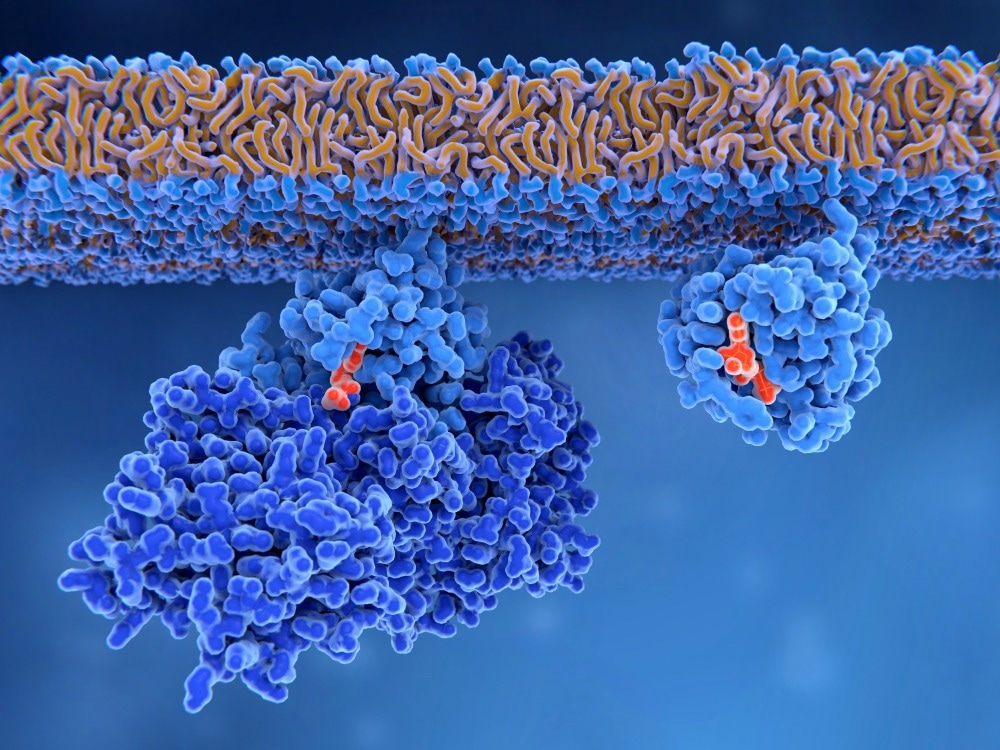What is Hotspot Mapping?
Hotspot mapping has recently gained popularity due to this approach utilizing empirical data to gain further understanding of protein binding sites for drug development applications, enabling drug design. Additionally, this strategy can be useful to spot differences in similar proteins that can be exploited for compound selectivity to create effective drugs.
The power of hotspot mapping to advance drug design is understood to lie within quantifying the ability and affinity of compounds to be useful within protein binding sites – accumulating this knowledge can enable the creation of a 3D grid of data that can be used to score compounds by their priority within drug design.
This approach is significant during an early stage of drug development as it allows key interactions of compounds with protein binding sites to be uncovered to allow researchers to construct the optimum compound for a particular biological target within a disease.
The formation of selectivity profiles within the proteome and target protein family requires full comprehension for pharmaceutical companies to develop effective and safe drugs. This is significant as understanding these key interactions enables the mapping of less efficient interactions with unrelated target proteins, which can result in adverse side effects and toxicity within patients. Complete comprehension of both effective and less effective interactions within target proteins is important to undergo the optimization process of drug development.

Image Credit: Juan Gaertner/Shutterstock.com
Using Hotspot Mapping for Polypharmacology
Postgraduate researcher Mihaela D Smilova, at the Center for Medicines Discovery within Oxford University, has outlined the significance of hotspot mapping, which enables automated analysis of a protein family, for developing effective drugs that benefit from polypharmacology.
Polypharmacology consists of the modulation of multiple targets, which Smilova states, ‘may help to prevent the development of resistant disease phenotypes.’ She further outlines the benefit of hotspot mapping on successful drug candidates, commenting these candidates have ‘a finely tuned selectivity profile within its target family, interacting with targets that positively impact the disease phenotype and avoiding interactions that lead to unwanted side effects.’
This is significant for advancing drug treatments for infectious diseases that affect global populations due to the specificity of multiple biological targets, which can increase the probability of successful treatment for patients. Additionally, with diseases such as cancer being heterogenous, multiple biological targets that interfere with key cell signaling pathways can aid in preventing disease progression as well as resistance within patients.
This is also true of viral infections such as the COVID-19 virus, which has been difficult to target due to the ever-mutating variants that have emerged; this has also affected the efficacy of vaccines that targeted the spike protein.
Targeting multiple pathways may be more useful when fighting against continuously mutating infections as there is a higher chance of effectively eliminating pathogens. The use of hotspot mapping can also potentially be useful in vaccine development to map the protein families that are biological targets within an infectious disease.

Image Credit: Krisana Antharith/Shutterstock.com
Future Outlook
Hotspot mapping may be a useful strategy as an input for computational workflows, which can aid in advancing research to present interpretable data that medicinal chemists can use.
This would be useful for fields such as pharmaceuticals and medicine, which are very intertwined, with advancements within biomedical research aiding the development of drugs translated within a clinical setting for patient care.
The use of hotspot mapping during an early stage of drug design can aid in providing a molecular blueprint using protein structure, with the highest-scoring compounds being prioritized for drug development when targeting a certain protein. Using computational methods and algorithms based on these scores can aid in potentially providing simulations that can assist in understanding how a drug would work.
This level of work at an early phase of drug development can be more useful than the conventional method as it can ensure targeted drugs are developed, which are more effective and successful – this can lead to a higher probability of gaining Food and Drug Administration (FDA) approval and be more cost-effective to pharmaceutical companies due to the high expense that is associated to clinical trials.
With a more comprehensive approach to drug development, pharmaceutical companies may be able to produce a higher volume of drugs approved by the FDA, which can be used to treat a wide variety of diseases affecting populations worldwide, from viral infections to cancer.
Sources:
- “Hotspot mapping” accelerates early-phase drug design - The Cambridge Crystallographic Data Centre (CCDC). Ccdc.cam.ac.uk. https://www.ccdc.cam.ac.uk/News/List/Hotspot-mapping-for-compound-selectivity-across-protein-families-in-drug-discovery/#:~:text=Hotspot%20maps%20use%20empirical%20data%20to%20assess%20protein,power%20of%20hotspot%20mapping%20to%20advance%20drug%20design. Published 2022. Accessed June 29, 2022.
- ‘Hotspot mapping’ accelerates early-phase drug design - Chemical Industry Journal. Chemical Industry Journal. https://www.chemicalindustryjournal.co.uk/hotspot-mapping-accelerates-early-phase-drug-design. Published 2022. Accessed June 29, 2022.
- Noh, J.Y., Jeong, H.W. & Shin, EC. SARS-CoV-2 mutations, vaccines, and immunity: implication of variants of concern. Sig Transduct Target Ther 6, 203 (2021). https://doi.org/10.1038/s41392-021-00623-2
- Smilova M, Curran P, Radoux C et al. Fragment Hotspot Mapping to Identify Selectivity-Determining Regions between Related Proteins. J Chem Inf Model. 2022;62(2):284-294. doi:10.1021/acs.jcim.1c00823
Further Reading
Last Updated: Nov 9, 2022